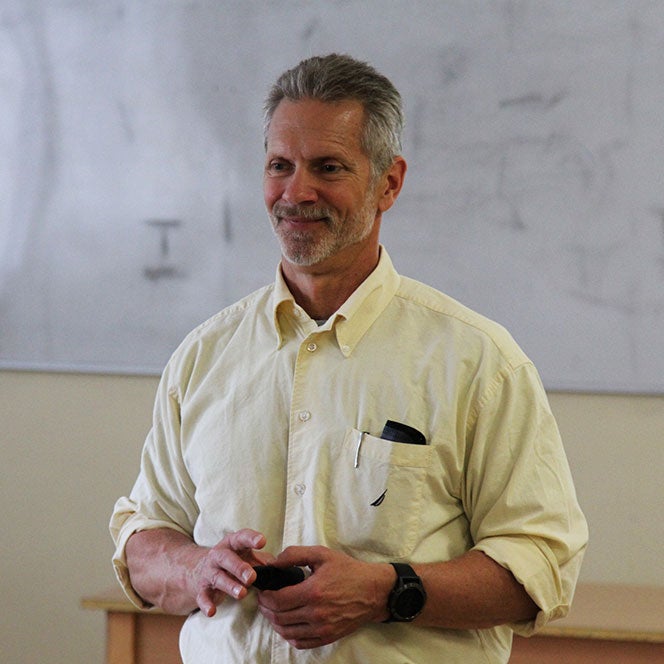
Shawn Simonson, professor and director of the Human Performance Laboratory in the College of Health Sciences’ Department of Kinesiology, spent part of his summer visiting with colleagues at Lithuanian Sport University in Kaunas, Lithuania, as part of Erasmus+. The European Union program supports education, training, youth and sport and includes U.S. institutions.
In 2018, Lithuanian Sport University reached out to Boise State University’s Global Education office and invited the Department of Kinesiology to join in a cooperative exchange. The university, which has significant research capacity, has actively sought international collaborations. Three Boise State faculty members visited in October of 2019 to learn more; Simonson was one of the three.
The cooperative agreement between Boise State’s Department of Kinesiology and Lithuanian Sport University now involves scholarships for Lithuanian students to travel to Boise State and vice versa; grants are also provided to faculty to visit the respective campuses for a week and conduct research and/or teach. Two Lithuanian Sport University students have attended Boise State for two semesters each; below are excerpts from Simonson’s journal this summer as the first Boise State faculty member to participate in the exchange program by visiting and conducting faculty development/teaching workshops.
June 14, first full day in Kaunas
“Tomas Kukenys picked me up at the hotel at 9 a.m. and we drove to Lithuanian Sport University (Lietuvos Sporto Universitetas or LSU), where we printed and collated materials for the workshop, and we were ready to go at 10 a.m.
“The Lithuanian State Institute of Physical Education was founded in late 1945, and after a couple of name changes, now uses the LSU moniker; it has grown from 100 students to around 1,500 students and offers 21 study programs: nine undergraduate, 10 master’s and two doctoral study programs in various exercise science, sport history and social areas.
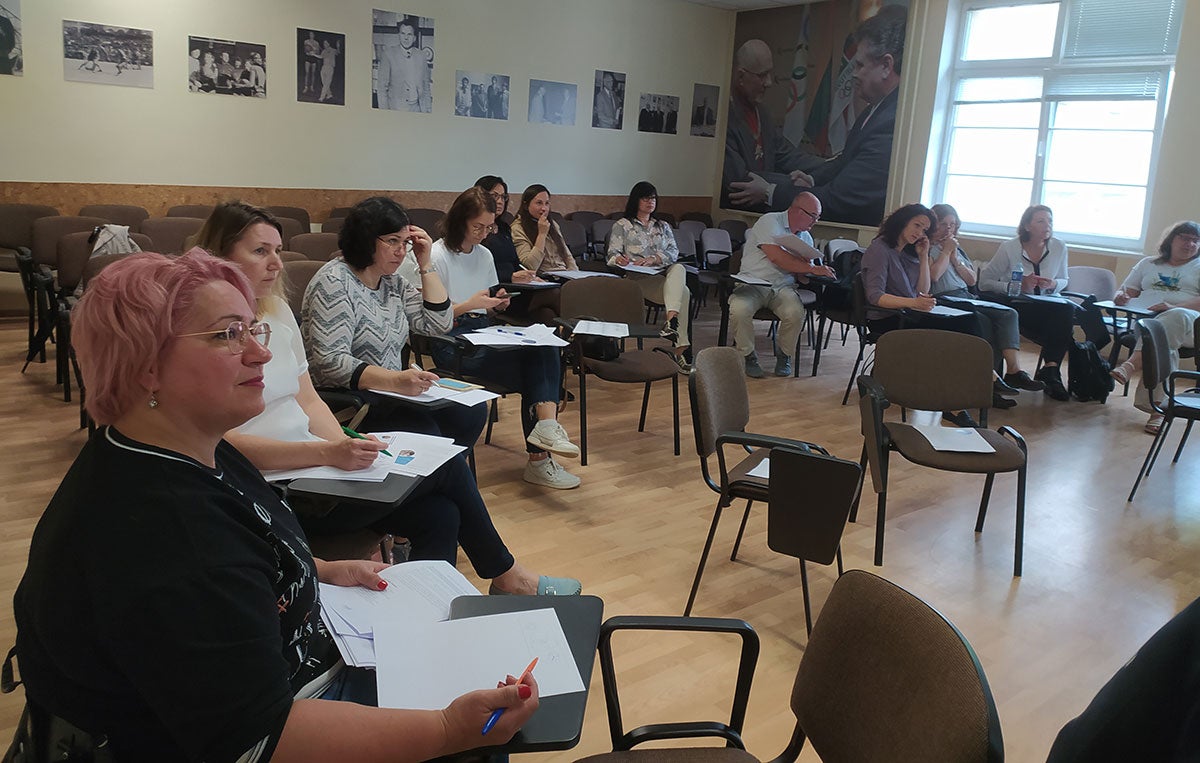
“I facilitated a three-hour workshop. It went well, however I learned about facilitating when I do not understand a word the students are saying within their teams. I like to wander around the room and listen in to conversations so that I can provide reinforcement and corrective feedback. Not being able to do so because of a language barrier was frustrating.
“It also took the participants longer to complete the activities because they had to translate the language and some terms were not familiar.
At the conclusion of the workshop, we went on a bit of a tour. We drove to Old Town and walked by the Kaunas Castle, where they have a great entertainment venue in the old moat, and went for lunch at a traditional Lithuanian restaurant, Bernelių užeiga, where we tried a traditional wild mushroom soup in a dark bread bowl, Firminė baravykienė su rukyta šonine, and potato dumplings stuffed with pork, Didžkukuliai.
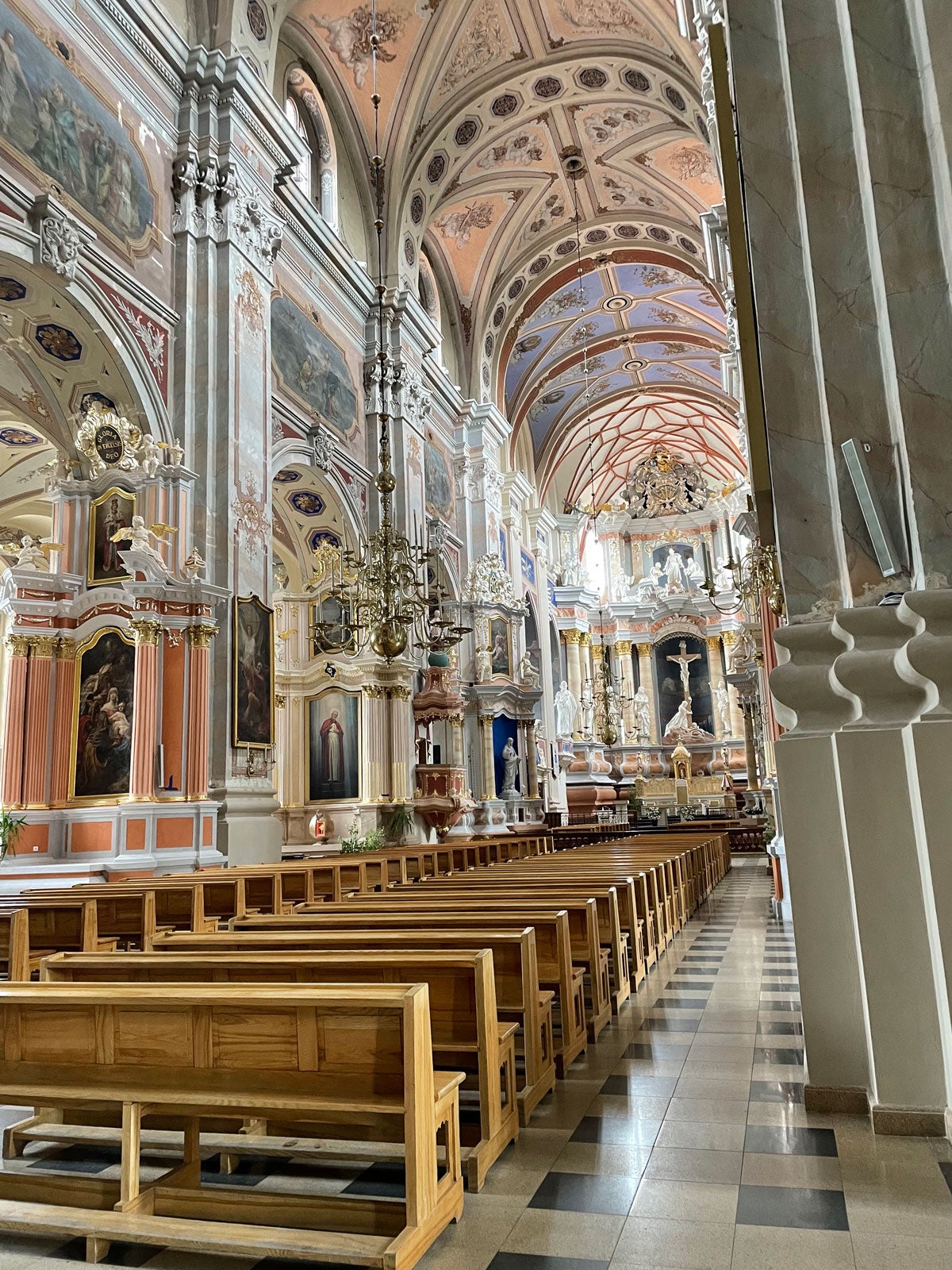
“After lunch, we walked around Old Town to visit the largest cathedral, the town hall (nicknamed the “white swan” because of its shape and color), the Neman river and the Church of St. Francis Xavier. It was interesting to see the gauges on the sides of buildings to measure the flood water heights experienced when the Neman river would flood before they built the hydroelectric dam.
“We walked the length of Laisves aleja into Old Town, back for a late dinner of lasagna at Casa della Pasta, walked to the hotel and called it a day.”
June 15, workshop and history
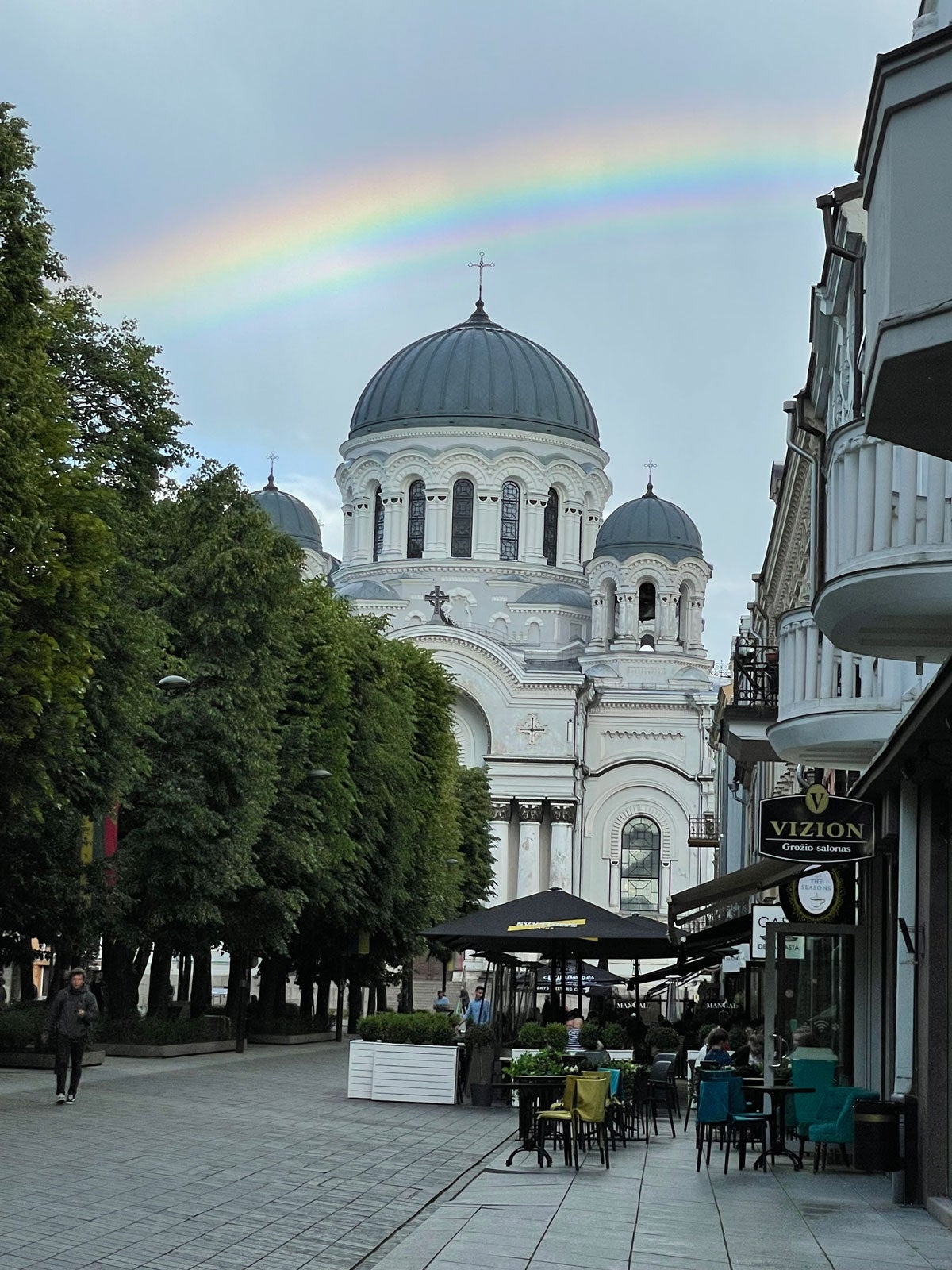
“Made the 20-minute walk to LSU this morning and facilitated a three-hour Introduction to Process Skills and Assessment of Process skills workshop. It went well, and I made useful adjustments to the facilitation after yesterday’s session.
“We made our way to the Devils (Žmuidzinavičius) Museum, where we walked through the collection started by Antanas Žmuidzinavičius, a famous Lithuanian artist. There was also a side tour of his house.
“From there, we went to the M. K. Čiurlionis National Museum of Art to see Čiurlionis’ work, portraits and works from historical Lithuanian artists and a special William Kentridge exhibit, then walked through the garden of the War Museum and the Monument to the Fallen for Lithuania’s Freedom (1921).
“From the War Museum garden, we walked back to Laisves aleja and stopped for dinner and to get out of the rain at Pub Projektai, then walked around Laisves aleja some more before heading back to the hotel to beat the rain.”
June 16, last workshop and a driving adventure
“Made the 20-minute walk to LSU for the last time this morning. I facilitated a three-hour Activity Structure and Activity Writing workshop. It went well, and the participants seemed to get a first draft of an activity completed.
“During the break, I met with LSU Rector Diana Rėklaitienė and we made comparisons of education and our respective institutions. In Lithuania, coaches and personal trainers at every level are required to have a college degree, and LSU provides those. What a great way to improve safety and skill development! Most LSU students are residential, and many participate in at least one semester at an institution in another country. Few work while attending, and most participate in sport, from the local club level to professional and national teams (basketball is the number one sport in Lithuania).
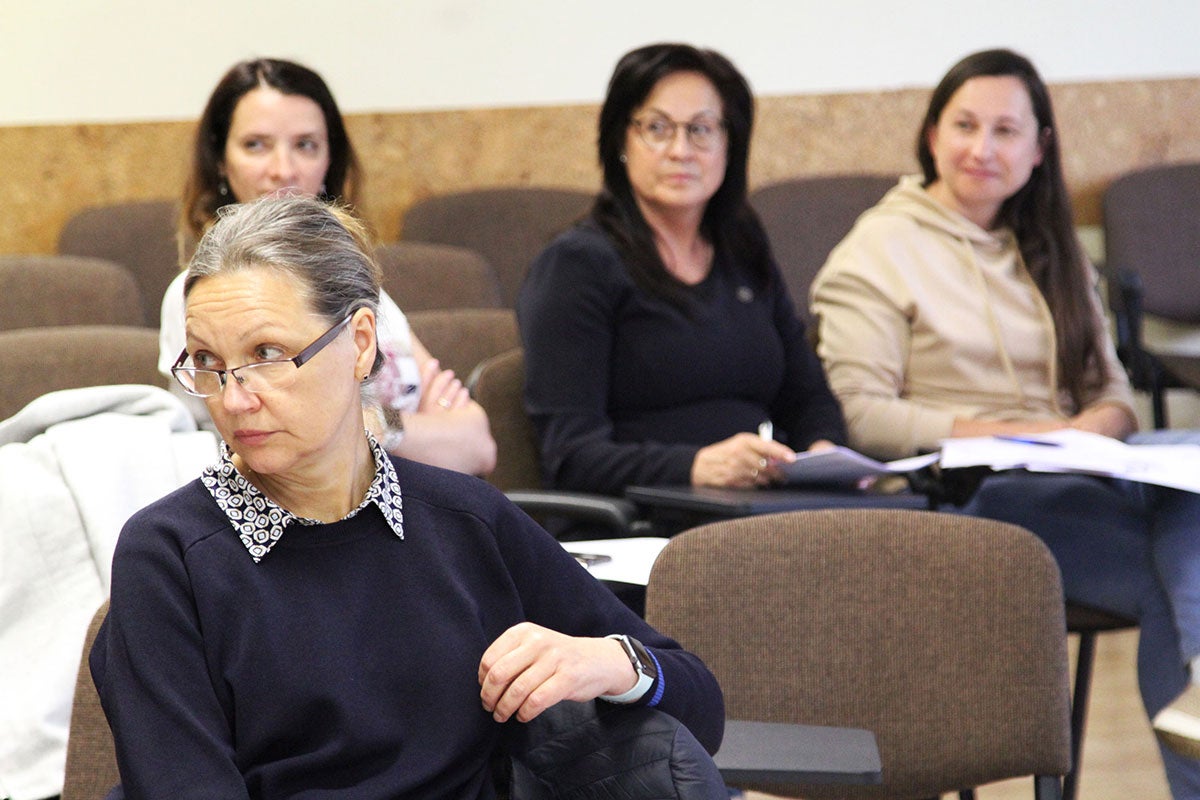
“After we completed the workshop, the participants had the usual questions about student buy-in, content coverage and making the transition. Tomas presented the participants with continuing education certificates and me with my Erasmus+ certificate and a gift bag with some nice chocolates and an LSU water bottle and notebook.
“Driving in a European town where the streets evolved long before there were cars is a challenge – especially when the street is barely wide enough for two-way traffic and people park on one side of the road. We were a bit confused about the difference between “No Parking,” “One-Way” and “Stop” signs. Turns out that there are very few stop signs, and they actually say stop. The big red Xs are no parking and the red horizontal bars are do not enter. Some streets have lane lines, some do not, and it is a challenge to tell if the white stripes are lane lines or separating the traffic directions. It was an adventure and we did not cause any accidents!
“Back to the hotel and another walk along Laisves aleja to have dinner at Paslėpti receptai.”